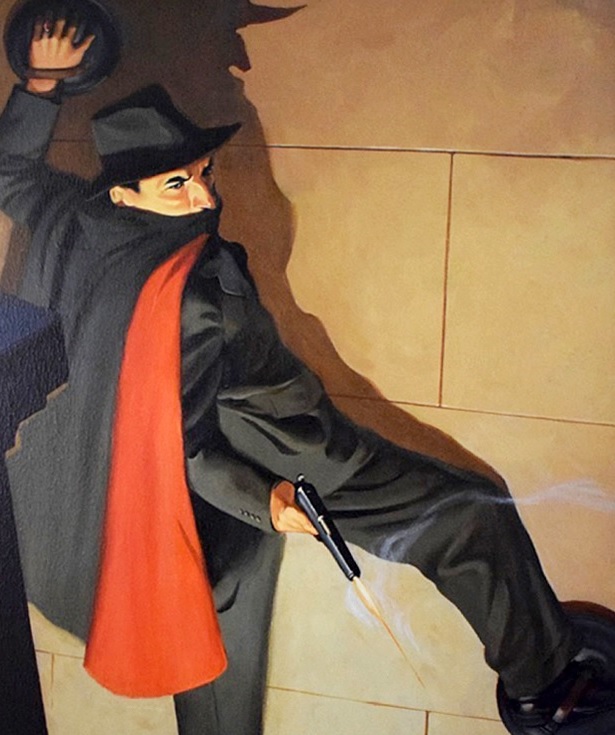The Shadow, though not obscure, is probably lodged in most people’s memories with other “second-tier” vigilantes and masks of yesteryear—Doc Savage, The Phantom, The Spider, Black Mask, Green Hornet, and so
The Shadow, though not obscure, is probably lodged in most people’s memories with other “second-tier” vigilantes and masks of yesteryear—Doc Savage, The Phantom, The Spider, Black Mask, Green Hornet, and so on (perhaps they remember the ’94 film with Alec Baldwin). But the Shadow was not simply the first of the “masks,” but in truth the first Dark Knight—Batman started as a rip-off.
If that seems a bold claim, let’s consider a little history. The Shadow debuted in the pulps in 1931, as an avenger using darkness and fear as weapons against criminals (he was even called a “Dark Knight”), though he doesn’t hesitate to use his dual 1911s either. A master of disguise, his most common alternate identity is Lamont Cranston, “wealthy young man-about-town.” He operates primarily out of New York.
Batman debuted in 1939, as a pistol-wielding avenger who also didn’t hesitate to kill. Beneath the cowl, he’s Bruce Wayne…wealthy young man-about-town. He operates out of Gotham, DC’s version of New York City, and a nickname for NYC. There are other, ahem, “coincidences,” but we don’t have space for them here.
The Shadow first appeared as a narrator for the Detective Story Hour radio show in 1930. Audiences clamored for more, so Street and Smith, sponsors of the show, commissioned Walter Gibson to develop the character. In 1931, The Living Shadow hit shelves, the first of over three hundred issues of The Shadow Magazine, featuring novel-length stories, most of which Gibson wrote.
While pulps are infamous for garish covers and writing commissioned by the yard, The Living Shadow is a solid specimen of the genre and its strengths. It starts in media res, with a quick, well-paced plot, and the titular character hardly more than glimpsed from the view of other protagonists, mostly Harry Vincent, the Shadow’s newest agent, plucked from attempted suicide. Harry is then sent down a rabbit hole of secret couriers, theft, and murder to help uncover the plans of a criminal mastermind as the Shadow’s activities weave in and out of Harry’s adventures.
Gibson’s prose does its job, as does characterization, but where he shines is dialogue and atmosphere as a backdrop for tension building to each appearance of the Shadow. Another important element of the character, on display in this first novel, is the mystery of his identity and background—no matter the layers you peel back, there’s always another.
Another aspect of the Shadow that sets him apart from his imitators is his extensive use of agents. He has a private intelligence service to keep track of the criminal underworld. Just as Watson was a stand-in for readers to watch Sherlock Holmes, the Shadow’s agents are our eyes on him.
The Shadow, his history always shrouded, is Justice Incarnate. The Shadow brings criminals to their end by turning upon them the very means and methods they use to commit their crimes, exacting a fitting and poetic justice.
If you want to get into the Shadow, be aware that the pulp, radio show, and comic versions are each distinct takes on the character, while later interpretations combined elements of the three. The pulp novels are the best place to start, but outside the pulps, The Shadow Strikes tells some of the character’s best stories. After that, The Shadow 1941: Hitler’s Astrologer and The Shadow: Blood and Judgment are most certainly worth a read. The 2012 comic series from Dynamite Comics (running to issue 100) is also worth a look. The Shadow: In the Coils of Leviathan is an excellent character study, written with thundering prose in the Shadow’s voice.
